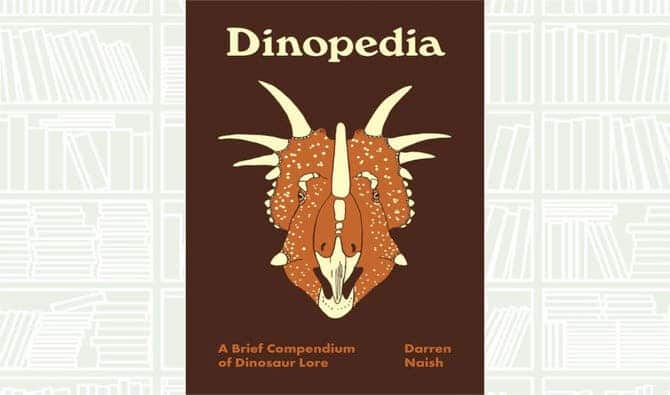Lots of kids (and plenty of adults) are obsessed with dinosaurs — and it’s easy to see why. They were huge, looked awesome, and ruled the world for millions of years — until they met their end in tragedy like mythical heroes. Their timeline, hundreds of millions of years into the past, is enough to conjure the imagination like no other thought. Later, some of these kids grow up to become paleontologists, and British author Darren Naish is a prime example.
After publishing several popular science books on dinosaurs, Naish is back with Dinopedia, a new book that summarizes some of the most important facts and information you should know about dinosaurs, complete with illustrations drawn by the author himself.

Dinopedia: A Brief Compendium of Dinosaur Lore
by Darren Naish
Princeton University Press // Buy on Amazon
This book will take you on a journey that will teach you about how almost everything we know about dinosaurs changed thanks to a series of astounding new discoveries and novel ideas.
Dinopedia, however, is not meant to be an exhaustive encyclopedia on all things dinosaurs. Instead, it’s a pocket-sized A-Z compendium of 75 entries on dinosaurs, relevant scientists, and even certain geographical locations, following the same format first set out by Fungipedia in 2019, another Princeton University Press title, and then expanded into other books on flowers, birds, trees, minerals, insects, and now dinosaurs.
Rather than a full-fledged encyclopedia, Dinopedia should be treated with the expectation of a primer to the world of dinosaurs, something which it does excellently. Whether all your knowledge of dinosaurs comes from Jurassic Park or you’re actually a paleontology nerd, this little book should satisfy both thanks to byte-sized entries in which scientific jargon is sparingly used, but which nevertheless reveal fascinating intricacies about more or less known dinosaurs and famous scientists who revolutionized the field.
Most of these entries were shaped by major scientific discoveries between the 1970s and 1990s, a period known as the so-called Dinosaur Renaissance. During this time, dinosaur paleontology bloomed and we came to learn a lot of extraordinary things about the ‘terrible lizards. It was during that time, for instance, that scientists learned that dinosaurs are the ancestors of today’s birds and they actually wore feathers, as well as constructed sophisticated phylogenetic trees that showed how different species were related to one another. These include contributions made by intellectual giants, such as Jack Horner, Halszka Osmólska, John Ostrom, and Paul Sereno, whose mini-bios are included in Dinopedia, as well as the sometimes controversial stories that surround them.
Of course, as the direct living descendants of dinosaurs, birds are also provided ample coverage. In fact, they aren’t just related — birds are dinosaurs, just like bats represent a group of mammals. Scientists now largely agree that dinosaurs were covered in feathers, had very light bones, and laid eggs. Sounds pretty familiar, right?
Approachable and conversational, Dinopedia is a great place to start if you’re looking to learn more about dinosaurs, but also about the extraordinary work and people that went into producing the science that revealed many mysteries about dinosaurs. It’s a book for kids as well as adults — pretty much everyone who wants to learn about these magnificent creatures.






